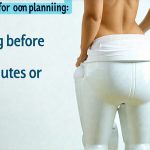Urinary tract infections (UTIs) are frustratingly common, particularly among women. Many associate them with post-coital discomfort or poor hygiene, but a less obvious culprit can be long journeys – specifically, long road trips. The combination of extended sitting, altered hydration habits, and limited bathroom access creates a perfect storm for bacterial growth and potential infection. While not every road trip results in a UTI, understanding the factors at play is crucial for preventative measures. This article will delve into the connection between road travel and UTIs, exploring why women are more susceptible and offering practical strategies to stay healthy on the open road.
The discomfort of a UTI – burning sensation during urination, frequent urges, cloudy urine – can quickly derail a vacation or business trip. It’s important to note that correlation doesn’t equal causation; a UTI coinciding with a road trip isn’t necessarily caused by it. However, the conditions inherent in long drives significantly increase the risk for many women. The unique anatomy of the female urinary tract makes them statistically more prone to UTIs than men, and prolonged periods spent sitting can exacerbate these vulnerabilities. This article will unpack those details, providing information geared towards proactive prevention rather than treatment – always consult a healthcare professional for diagnosis and appropriate care.
Why Road Trips Can Increase UTI Risk
The primary reason road trips elevate UTI risk boils down to several interconnected physiological factors. Prolonged sitting restricts blood flow to the bladder and pelvic region, potentially hindering the natural flushing of bacteria from the urinary tract. Furthermore, long stretches without bathroom breaks allow urine to stagnate in the bladder, providing a breeding ground for E. coli, the most common cause of UTIs. This is particularly problematic as women have shorter urethras than men, making it easier for bacteria to reach the bladder.
The act of driving itself can also contribute indirectly. Stress from traffic, navigating unfamiliar routes, or simply being confined in a vehicle for extended periods can weaken the immune system – making individuals more susceptible to infection. Additionally, changes in diet and hydration during travel often play a role. Road trip snacks are frequently high in sugar and low in nutrients, while fluid intake may be inconsistent, leading to dehydration which concentrates urine and further promotes bacterial growth. It’s a complex interplay of physical constraints, physiological responses, and lifestyle choices that create the heightened risk.
Finally, consider the practicalities of road trip bathroom stops. Often, individuals will delay urination to avoid searching for restrooms or interrupting travel time. This practice – holding in urine for extended periods – stresses the bladder muscles and can compromise their ability to fully empty, leaving residual urine as a haven for bacteria. Even seemingly minor changes like tight clothing restricting airflow or improper wiping techniques after using public toilets can contribute to increased susceptibility.
The Role of Dehydration
Dehydration is arguably one of the most significant contributing factors to road trip UTIs. When you don’t drink enough fluids, your urine becomes more concentrated—meaning a higher concentration of bacteria and waste products. This creates a more favorable environment for bacterial growth within the urinary tract. Proper hydration dilutes the urine, making it easier for the body to flush out potential pathogens.
- Aim for consistent sipping throughout the journey, rather than large gulps infrequently.
- Water is always best, but unsweetened herbal teas can also contribute to hydration.
- Avoid excessive caffeine and alcohol, as these act as diuretics, actually increasing fluid loss.
It’s easy to underestimate how much water you need while traveling. The dry air in a car, coupled with the physical exertion of driving (even if it feels minimal), accelerates dehydration. Many people mistake thirst for hunger, opting for snacks instead of water. Recognizing the early signs of dehydration – headache, fatigue, dizziness – is crucial and responding proactively with fluid intake can significantly lower UTI risk. Understanding how dehydration alone impacts urinary health is essential for travelers.
The Impact of Prolonged Sitting
As previously discussed, prolonged sitting negatively impacts blood flow to the pelvic region. This reduced circulation slows down the natural cleansing mechanisms within the urinary tract, allowing bacteria more opportunity to colonize and proliferate. Think of it like a stagnant pond versus a flowing stream; standing water is much more likely to harbor unwanted growth. The pressure from sitting also constricts the bladder and urethra, making complete emptying more difficult.
To mitigate these effects:
1. Take frequent breaks – ideally every two hours – to stretch your legs and walk around.
2. Practice pelvic floor exercises (Kegels) during stops to strengthen supporting muscles.
3. Consider using a lumbar support cushion to maintain good posture and reduce pressure on the bladder area.
It’s not just about the duration of sitting, but also the position. Slouching or crossing your legs can further constrict blood flow and increase pressure on the urinary tract. Maintaining proper posture and taking regular movement breaks are essential for minimizing these risks.
Clothing and Hygiene Considerations
While often overlooked, clothing choices and hygiene practices can significantly impact UTI risk during road trips. Tight-fitting pants or underwear restrict airflow to the genital area, creating a warm, moist environment that fosters bacterial growth. Opting for breathable cotton undergarments and looser fitting clothing is advisable. Similarly, synthetic fabrics trap moisture more readily than natural fibers.
When using public restrooms (which are unavoidable on road trips), proper hygiene is paramount. Always wipe from front to back after urination to prevent bacteria from the rectal area spreading to the urethra. Avoid douching or using harsh soaps in the genital area, as these can disrupt the natural bacterial balance and increase susceptibility to infection. Consider carrying antibacterial wipes for added peace of mind, especially when restroom cleanliness is questionable. Even activities like riding bicycles can pose similar risks related to friction and pressure.
Ultimately, preventing UTIs on road trips requires a multi-faceted approach that addresses hydration, circulation, hygiene, and mindful bathroom habits. By understanding the contributing factors and implementing these preventative measures, women can significantly reduce their risk and enjoy their journeys without fear of discomfort or interruption. Remember, this information is for general knowledge and should not replace professional medical advice; if you suspect a UTI, consult a healthcare provider immediately.





















